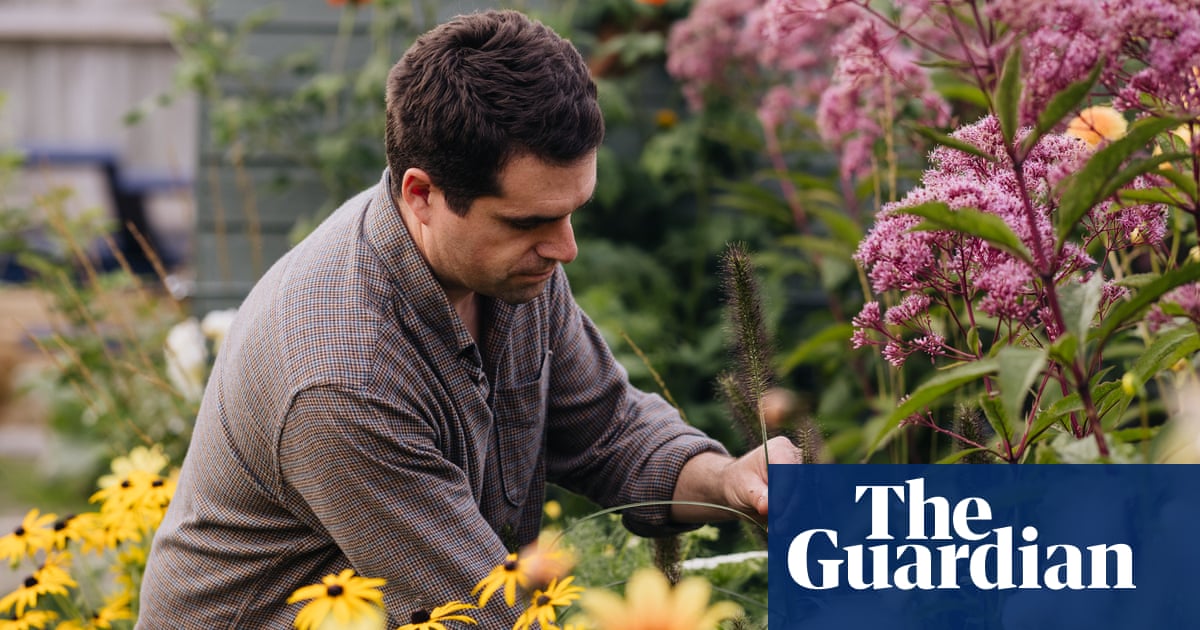
ardening in February is all about enjoying signs of spring and getting ready for the growing season. Whether you have a single window ledge, a balcony or a whole garden to play with, there is plenty to do – even in British weather – to prepare.
Five things you should plant
Now is the time to invest in some planting that will pay dividends come summer. Bare root season goes on until the end of next month and is a thrifty, sustainable way to fill borders: roses are often sold this way, sent in the post without soil or pot. Choose a single-flowered rose to attract bees, such as the butter-yellow Tottering-By-Gently from David Austin Roses, who send bare roots in plastic-free packaging.
Fruit trees are also available as bare roots: if you are ordering online from stockists such as Blackmoor Nurseries or Orange Pippin Trees, why not choose something you can’t get in the shops, such as a quince, a mulberry or an unusual apple variety. If space is limited, look for a dwarf or cordon tree.
February can be frustrating if you are itching to sow seeds: it is just too early for much of this work as, in a couple of months, you will end up with lots of young plants that need to be repotted somewhere warm and bright – tricky if you live in the UK. Sweet peas are an exception: they are hardy enough to sprout in a cold frame, sheltered porch or greenhouse at this time of year. You can use cardboard toilet roll centres or regular pots for sowing: the deeper, the better, because sweet peas have long roots. Poke seeds to 2-3cm under the surface of whatever compost you have and keep moist (and protected from mice).
If your gardening space is limited to a back step or an equally small surface, buy a box of dried edible peas, soak them for a few hours in a mug of water, then drain and sow into a seed tray, covering with plastic sheeting to protect from the weather. Within weeks, you will have shoots to harvest for salad: cut just above the lowest leaves and they will sprout into another crop.
Window boxes can be zhoozed up with variegated ivy, pots of spring bulbs from the garden centre or supermarket (choose ones in bud rather than already open) and small evergreen ferns. Before you begin planting, renew the soil with multipurpose peat-free compost and make sure there are plenty of drainage holes to prevent water-logging.
Five garden maintenance tasks to complete
If you have a water butt that is blocked or stinky (as often happens over winter), pick a mild day and don your oldest clothes and a can-do attitude: you may get wet and filthy, but you will have fun. Drain out any remaining water from the butt and scrub the inside with hot, soapy water: blasting with a hose from the inside should dislodge anything blocking the tap. Secure an old pair of tights over the inlet from the drainpipe and make sure the lid is on securely to stop debris accumulating again.
If you have a buddleia that has grown tall and gangly, stooling is the answer: this just means chopping it back to about 30cm above ground level. Be brutal and it will grow back better.
Gardening tools tend to end winter in a right state. Clean off the mud with a damp cloth then dry thoroughly, oiling wooden handles with linseed oil and disinfect pruning blades with Jeyes Fluid or Citrox.
If the weather is terrible, stay indoors and have a seed sort-out. You can buy fancy seed storage boxes, but a ring binder and plastic folders work just as well. Set aside packets you will be sowing in the next few weeks and work out what to buy.
Clean your windows. Yes, it is a boring job, but it will have an impact on how much light gets through to plants in greenhouses, cold frames and indoor window ledges.
Five other ways to enjoy your garden
One of my distractions from winter homeschooling ennui – and lockdown boredom generally – is watching garden birds through the window. They are starting to scout for nesting sites, so don’t delay putting up a nesting box – in a sheltered spot facing north or east, if possible.
You may have a bird feeder sorted, but make sure there is a source of fresh, unfrozen water for birds and other wildlife. You don’t need to buy an elaborate bird bath: a heavy, shallow dish placed on the ground is fine. Remember to pour on some hot water on freezing days to melt the ice.Walk around the garden and see what is flowering: you may be surprised by what is already bursting into life, especially if the weather is mild. Snip some branches to bring inside and enjoy the scent and colour: wintersweet (Chimonanthus praecox), witch hazel (Hamamelis), winter honeysuckle (Lonicera fragrantissima) and mahonias all make wonderful displays even if you just plonk them in a glass of water.
I have tried most of the plant apps, but you can’t beat a journal for recording your gardening life. This year, I am investing in the Grow a Damn journal: it is designed by a gardener, for gardeners.
Is it too late to plant that pack of spring bulbs you unearthed at the back of the cupboard? It is never too late – if the bulbs aren’t mushy. They may flower later, but get them into the ground and they should grow.












